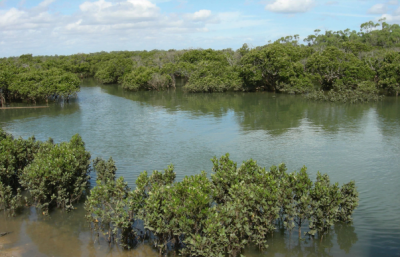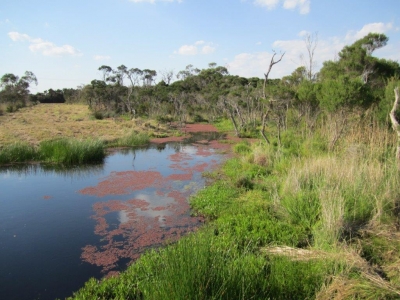On this page
Mangroves
Mangroves are small trees with breathing roots that live between high and low tide.

Quick facts
- Fish, crabs and insects live in mangroves and are an important part of the marine food chain
- Mangroves protect shorelines from wave erosion
- Mangrove forests expand by creating their own soil from trapping sediments
- Western Port is one of the most southern places that mangroves occur
Help protect them
- Avoid walking, riding or driving through mangrove areas
- Take care when boating or fishing not to damage mangrove roots
- Don't dump rubbish and litter in coastal areas
Seagrass
Seagrass are flowering plants living completely submerged in salty water.

Quick facts
- Seagrasses act as a nursery and refuge for small marine organisms, seahorses, juvenile whiting and crabs
- Seagrasses form large meadows that stabilise the seabed and influence water quality
- Soil erosion from the catchment can smother seagrass
- Seagrasses absorb carbon dioxide and release oxygen in daytime and the reverse occurs at night
Help protect them
- Reduce runoff and pollution from farming activities
- Plant indigenous plants on banks to reduce erosion
- Avoid anchoring and driving boats through seagrass beds at low tide
Saltmarsh
A saltmarsh relies on temporary saltwater inundation for its unique plant life.

Quick facts
- Saltmarsh is extremely diverse with grasses, reeds, sedges, rushes and succulent herbs and shrubs
- It provides nutrients for mussels, crabs, oysters and other shellfish
- It is highly sensitive and can be easily damaged, with a slow recovery
- It requires protection by mangroves to flourish
Help protect them
- Tread lightly when walking in a saltmarsh
- Fence off saltmarsh from livestock
- Don't take trail bikes or 4WDs into a saltmarsh area
Coastal woodlands
Coastal woodlands provide habitat and assist with erosion control and water filtration.

Quick facts
- Swamp paperbacks sit on the edge of swamps and provide shelter and food for bees and birds
- Large gum trees over 100 years old form hollows for possums and birds
Help protect them
- Protect coastal woodlands on your property by fencing to prevent damage
- Stay on designated paths when visiting bush reserves
- Dispose of grass and plant cuttings in green waste bins for Council collection
